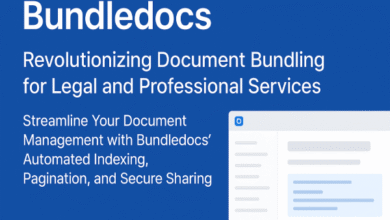FBI Watchlist Search: A Critical Step in Risk-Based Customer Screening

In an increasingly complex regulatory and risk environment, businesses—especially those in financial services, fintech, legal, and real estate sectors—must ensure that their customers are not linked to criminal activities, terrorism, or fraud. One of the most effective tools to support this process is the FBI Watchlist Search. As part of a broader risk-based customer screening strategy, the FBI watchlist search helps institutions detect and prevent association with high-risk individuals or entities.
In this article, we’ll explore what the FBI Watch list Search is, why it matters, and how organizations can integrate it into a risk-based compliance framework.
What Is the FBI Watchlist?
The FBI Watchlist isn’t a single list, but rather refers to multiple law enforcement databases maintained or contributed to by the Federal Bureau of Investigation and related U.S. government agencies. Key watchlists include:
- Terrorist Screening Database (TSDB)
- FBI’s Most Wanted Lists
- National Crime Information Center (NCIC) databases
- Terrorist Identities Datamart Environment (TIDE) (linked via inter-agency collaboration)
These watchlists contain names of individuals suspected or convicted of terrorism, organized crime, espionage, violent crimes, and other high-risk behaviors.
Why the FBI Watchlist Search Is Crucial
Compliance with AML/KYC Regulations
In industries governed by Anti-Money Laundering (AML) and Know Your Customer (KYC) obligations, conducting watchlist screening is not optional—it’s mandatory. Regulatory bodies like FinCEN, FATF, and OFAC recommend or require screening against government watchlists to prevent illegal financial activity.
While the OFAC SDN list is often used for sanctions compliance, the FBI watchlist adds another dimension by highlighting domestic threats, fugitives, and individuals involved in serious criminal investigations.
Risk-Based Approach to Customer Due Diligence
Not every customer poses the same level of risk. The risk-based approach encourages businesses to apply more rigorous screening to higher-risk individuals—such as politically exposed persons (PEPs), individuals from high-risk jurisdictions, or those engaged in cash-heavy businesses.
The FBI Watchlist Search acts as a tiered due diligence filter—if a potential client matches an FBI record, enhanced due diligence (EDD) is required, and in some cases, a business relationship must be rejected or terminated.
Fraud Prevention and Brand Protection
Allowing a known criminal or wanted individual into your customer base can lead to financial losses, reputational damage, and legal exposure. The FBI watchlist can flag individuals with histories of:
- Fraudulent activity
- Human trafficking
- Cybercrime
- Financial crimes
By identifying these connections early, businesses can mitigate reputational risk and protect customers and stakeholders.
How the FBI Watchlist Search Fits into Screening
Identity Verification
Before screening, the customer’s identity must be verified using KYC documents such as passports, IDs, or biometric verification.
Database Screening
Once identity is confirmed, the data (name, date of birth, etc.) is screened against FBI and other government watchlists. This is usually done via an automated system integrated into the compliance workflow.
Match Review and Resolution
If a potential match is found, it must be manually reviewed to confirm whether it’s a true positive or a false positive. This is where human analysis comes in—looking into context, aliases, and related identifiers.
Ongoing Monitoring
One-time screening is not enough. Risk-based programs require continuous or periodic monitoring, especially for high-risk clients. New entries to FBI lists are updated regularly, and businesses must stay current.
Choosing the Right Screening Provider
Since FBI watchlist data is not always available publicly in real-time or in structured formats, many businesses rely on third-party AML screening providers who integrate multiple government sources, including:
- FBI Most Wanted
- OFAC SDN
- Interpol Red Notices
- Local law enforcement lists
Look for a provider that offers:
- Real-time updates
- Accurate match resolution (fuzzy logic, alias detection)
- Global coverage
- API integrations
- Audit trails for compliance reporting
Challenges and Considerations
False Positives
One of the biggest challenges in watchlist screening is false positives—when someone matches a list entry but is not the same person. This can cause delays, frustration, and poor customer experience if not handled carefully.
Data Limitations
FBI watchlists are law enforcement tools, not full criminal records. They may contain limited information and may not reflect the current legal status of an individual.
Privacy Compliance
Handling sensitive personal data requires strict compliance with data protection laws like GDPR, especially if you’re storing match information or profiling users.
Final Thoughts
The FBI Watchlist Search is a powerful tool for identifying high-risk individuals during customer onboarding and monitoring. When integrated into a risk-based compliance framework, it helps organizations:
Stay compliant with national and international regulations
Avoid doing business with criminals or fugitives
Protect their reputation and customer base
In a world of rising financial crime and regulatory scrutiny, ignoring FBI watchlist screening is not just risky—it’s reckless.
Implement it early. Monitor it consistently. Use it wisely. That’s the foundation of intelligent, risk-based customer screening.



